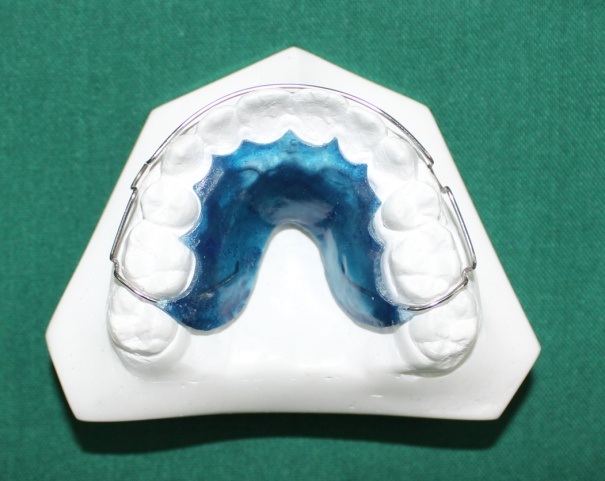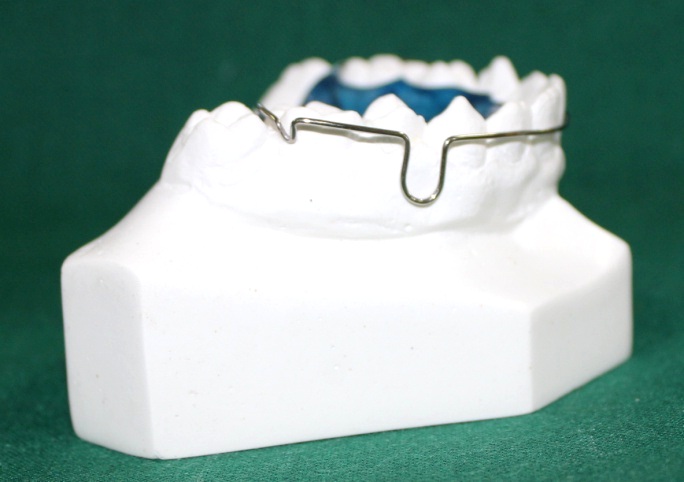Modified Wrap-Around Retainer: A Quick Tip To Enhance the Retention of the Appliance
Kanhu Charan Sahoo1, Snigdha Pattanaik2
1 Reader, Department of Orthodontics, Institute of Dental Sciences, Siksha ‘O’ Anusandhan University, Bhubaneswar, Odisha, India.
2 Senior Lecturer, Department of Orthodontics, Institute of Dental Sciences, Siksha ‘O’ Anusandhan University, Bhubaneswar, Odisha, India.
NAME, ADDRESS, E-MAIL ID OF THE CORRESPONDING AUTHOR: Dr. Snigdha Pattanaik, Plot No. 939/40, Mahanadi Vihar, Cuttack, Odisha, India.
E-mail: dr.snigdhapattanaik@gmail.com
As the teeth are in an inherently unstable position after the completion of the orthodontic treatment, a little pressure even from the soft tissues may create a relapse tendency. So there is always a need for a retention period until the gingival and periodontal reorganization is completed around the new position of the tooth. Removable appliances can be used effectively for the retention purpose of which Begg’s wrap around retainers are most commonly used. This article presents a new modification in the design of the appliance which will help us to use the retainer more efficiently.
Acrylic resins, Maintenance, Orthodontic retainers, Orthodontics, Stainless steel
Introduction
Retainers are used after orthodontic correction to maintain the teeth in the new position while allowing remodeling of the surrounding tissue [1]. Begg’s wrap-around retainers are the most commonly used retainers after orthodontic correction for providing stability to the achieve orthodontic correction. This new design of the Begg’s retainer has been modified with the addition of a single arrow head to improve the retention of the appliance.
Construction
The technique is illustrated on a patient cast which was indicated for retainer after the fixed orthodontic treatment.
A 0.7mm stainless steel arch form was made on the cast touching the labial side and buccal side of all teeth [Table/Fig-1].
A U-loop was given at the canine-premolar region to increase the length of the wire to get more flexibility.
The wire was then extended till the last erupted molar embracing it and finally an arrow head was made on the distal part of the molar to engage in the distal undercut area [Table/Fig-2].
A 0.7mm stainless steel arch form.

Arrow head made on the distal part of the molar to engage in the distal undercut area.

Discussion
The Begg’s retainer is fabricated with acrylic resin, covering the palate and presents a stainless steel buccal arch that usually extends as a continuous arch till the distal surfaces of last erupted molars and contours the buccal aspects of anterior and posterior teeth, without the need of any retention clasps [2].
The complex wire bending of the Begg’s retainer makes it difficult for the clinician to adapt the wire distally especially in case of a partially erupted or a distally tilted molar. The retention of the appliance is also compromised if the distal part of the wire is not adapted properly. In this new design of the Begg’s retainer, an additional arrow head has been incorporated to increase the retention of the appliances. Making an arrow head is a simple and easy procedure than to adapt the wire along the contour of the molar which enables the clinician to make the appliance in less time. This modified Begg’s retainer can be used in all cases along with some special cases as mentioned below.
Indications
Partially erupted molars.
Distally tilted molars.
Loss of tooth structure due to caries.
Contraindications
Uncooperative patients.
Children with special needs.
Advantages
Better retention than the conventional appliance.
Arrow head is easy to make and adapt on the cast.
Less time required for the fabrication of the appliance.
Disadvantages
Good clinical skill is required for making the wire component.
Improper wire bending might lead to occlusal interference and lack of retention.
[1]. Melrose C, Millett DT, Towards a perspective on orthodontic retention?Am J Orthod Dentofacial Orthop 1998 113(5):507-14. [Google Scholar]
[2]. Rinchuse DJ, Miles PG, Sheridan JJ, Orthodontic retention and stability: a clinical perspectiveJ Clin Orthod 2007 41(3):125-32. [Google Scholar]